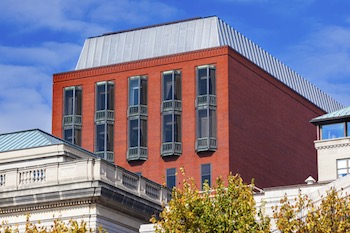 SimpleAir, Inc. v. Google LLC, No. 2016-2738, 2018 (Fed. Cir. Mar. 12, 2018) (Before Lourie, Reyna, and Chen, J.) (Opinion for the court, Lourie, J.)
SimpleAir, Inc. v. Google LLC, No. 2016-2738, 2018 (Fed. Cir. Mar. 12, 2018) (Before Lourie, Reyna, and Chen, J.) (Opinion for the court, Lourie, J.)
The Federal Circuit vacated a district court order dismissing SimpleAir’s complaint as barred by claim preclusion and the Kessler doctrine, and remanded for further proceedings.
SimpleAir’s patents concern push notification technology. This case was one in a string of lawsuits filed against Google’s Cloud Messaging services.
Claim preclusion bars a party from filing a suit based on a claim or cause of action if the court previously issued a judgment on that cause of action. However, claim preclusion does not bar a party from asserting infringement based on activity occurring after a judgment. Under the so-called Kessler doctrine a party cannot assert its patent against post-judgment activity if an earlier judgment held that “essentially the same” accused activity did not infringe.
The district court found claim preclusion applied because the patents at issue had the same title and specification as previously litigated patents, SimpleAir files a terminal disclaimer to overcome obviousness-type double patenting, and Simple Air could have included the newly asserted patents in its previous actions. However, the district court never compared the claims of the patent at issue to the claims of the previously litigated patents.
On appeal, the only element of claim preclusion in dispute was whether this case involved the same claim or cause of action as those that came before it. The Federal Circuit emphasized that “it is the claims of the patent which define the invention,” and noted that the district court never analyzed any claims when finding claim preclusion. For preclusion to apply, the accused activity between two cases must be “essentially the same,” and in patent cases this inherently includes a comparison of the patent claims.
Where different patents are asserted in a first and second suit, a judgment in the first suit will trigger claim preclusion only if the scope of the asserted patent claims in the two suits is essentially the same, meaning patentably indistinct. Since the district court did not make this comparison, and did not properly determine whether SimpleAir’s claims were precluded, there was no earlier judgment to consider. The district court’s order was vacated, including its findings under the Kessler doctrine. The Federal Circuit remanded to the district court to determine whether the claims are patentably indistinct from the previously adjudicated patents, and therefore precluded.
Where different patents are asserted by a party in a first and second suit, a judgment in the first suit will trigger claim preclusion only if the scope of the asserted patent claims in the two suits is essentially the same.
[Troutman-Ad]
[Troutman-About]

![[IPWatchdog Logo]](https://ipwatchdog.com/wp-content/themes/IPWatchdog%20-%202023/assets/images/temp/logo-small@2x.png)


![[Advertisement]](https://ipwatchdog.com/wp-content/uploads/2024/05/Quartz-IP-May-9-2024-sidebar-700x500-1.jpg)
![[Advertisement]](https://ipwatchdog.com/wp-content/uploads/2024/04/Patent-Litigation-Masters-2024-sidebar-700x500-1.jpg)

![[Advertisement]](https://ipwatchdog.com/wp-content/uploads/2021/12/WEBINAR-336-x-280-px.png)
![[Advertisement]](https://ipwatchdog.com/wp-content/uploads/2021/12/2021-Patent-Practice-on-Demand-recorded-Feb-2021-336-x-280.jpg)
![[Advertisement]](https://ipwatchdog.com/wp-content/uploads/2021/12/Ad-4-The-Invent-Patent-System™.png)






Join the Discussion
No comments yet.